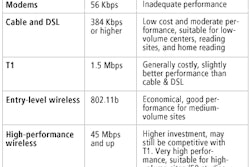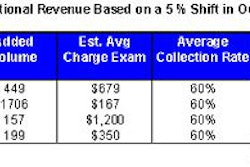Run a car long enough without changing the oil and the engine will eventually seize. The pistons will score their cylinders, the head will warp at its gasket, and the valves will deform from the friction-induced overheating.
But if you run an information system (IS) long enough without auditing its infrastructure, equipment, and throughput on a regular basis, chances are it won't come to a grinding halt. Rather, its performance will deteriorate incrementally, resulting in lower productivity, frustrated users, and increased system downtime.
"Most clinical information systems in our experience are marginally successful. Although they’re sort of successful, they’re certainly not as successful as they could be, for one reason or another," said John McMahan, a Florence, OR-based healthcare information consultant.
McMahan partnered with Gail Gross, laboratory information systems manager at Washington Hospital Center in Washington, DC, to present their case for IS audits at the 2002 American Healthcare Radiology Administrators meeting in New Orleans.
The duo outlined a number of reasons for an information technology (IT) manager to conduct an IS audit. A primary driver for thorough IS reviews is the continually evolving healthcare environment -- for U.S. institutions, compliance with the Health Insurance Portability and Accountability Act (HIPAA) is forcing many IS audits.
Satisfying government regulations is a powerful motivator. In addition, McMahan outlined eight other strong reasons to conduct an IS audit.
- Hardware and infrastructure deteriorate as equipment ages; also, new additions are not fully compatible with existing systems.
- Customer needs change and evolve.
- User needs change and evolve.
- The system is not upgraded on a consistent basis.
- People using the system become less proficient with use.
- The system is not maintained consistently or effectively.
- Working systems do not receive adequate support, focus, or attention from the facility.
- New systems, features, and functions become available that could improve efficiency and effectiveness.
Scoping the audit
According to McMahan, clinical systems audits are typically not done by the IS department. This is because there is generally a lack of perceived value, the "if it’s not broken, don’t fix it" mindset, and most IS departments focus manpower on new projects. Thus, it’s mostly left to the system’s user group to take on the audit responsibility.
Most radiology groups are struggling to cope with current workload, so an IS audit conducted in-house by a systems manager requires scrupulous planning. An alternative is hiring an outside source to conduct the audit. Regardless of who performs the review, there are five elements that should be covered during the audit, McMahan said:
- Review, and maybe redefine, strategic plans for the department.
- Review and update the goals set for the system.
- Determine how well the system is meeting the goals and strategic objectives.
- Evaluate the "gap" between goals and reality, and determine corrective actions.
- Develop an action plan and present it for approval.
"An audit plan has to be practical in that it recognizes the resources available to do the work. It also needs to be outcome-oriented and produce measurable results, as well as addressing the current concerns of the group. Finally, it has to stay focused on the stakeholder’s issues," McMahan said.
Process and procedure
Once a plan is drafted and approved, the bulk of the work begins. The original goals of the system must be measured against the reality of the workplace. Is the system meeting its original goals, how well has it met those goals, and has its capability to meet those goals changed? These are the questions that need to be answered, according to McMahan and Gross.
How the staff is using the system must be observed and noted. The duo suggested a benchmark to determine whether current users can pass proficiency tests given to the new staff.
"You can’t just ask the staff how they use a system and note their answers in your audit documentation. You have to actually watch people use the RIS or the PACS in day-to-day interaction," said Gross.
Hardware and software, at both the system and application level, must be documented and the update and service logs examined. The infrastructure should be checked to ensure that it meets the department’s needs. Finally, known problems and chronic user complaints need to be noted in the audit.
Taking action
Documenting the outcome of an audit provides the necessary data for creating an action plan. The action plan should be organized by priority, benefit, and cost, McMahan said. Each of these elements needs to be detailed and cross-referenced so that a priority can be easily associated with its immediate and long-term benefits, as well as its cost.
Once there is agreement on implementing action items from the audit, it's important to have defined metrics that are measured both before and after implementation.
"By delivering measurable, specific results, you demonstrate the value of the clinical IS audit. Each success builds the necessary credibility for implementing more items from the action plan," McMahan said.
By Jonathan S. BatchelorAuntMinnie.com staff writer
October 3, 2002
Related Reading
Radiology service not keeping up with routine demand in UK, August 8, 2002
BMC puts PACS vendors to the test, June 24, 2002
Referring physicians give thumbs up to PACS, June 11, 2002
Reinvestment optimizes PACS productivity, November 21, 2001
PACS quality control ensures that exams get read, May 30, 2001
Copyright © 2002 AuntMinnie.com



















